From 1857 to 1860 the Palliser Expedition surveyed and explored the remote wild and rugged western frontiers of what was then known as British North America, naming and describing a great many plants, mountains, and other geographic features along the way. I’ve previously talked about the expedition on blog posts for Waterton hikes way down at the very bottom of the Alberta Rockies, which gives an idea of just how large an area was covered by this small handful of men during the expedition.
While exploring northward up the Bow Valley expedition geologist James Hector wrote “[s]eeming to stand out in the centre of the valley is a very remarkable mountain, still at a distance of 12 miles, which looks like a gigantic castle.”
Not the most creative man in the world, he decided to name it Castle Mountain.
That said, it really really looks like a castle, though one of such impossible scale as to have been built by giants. Towering above the Bow Valley, Castle Mountain is one of the most iconic mountains in all of Banff National Park. Go into any gift shop in the park and you’re sure to find rows of t-shirts, mugs, and postcards with its image printed all over them alongside other Banff A-list celebrities like Lake Louise, Cascade Mountain, and Mt Rundle.
Constructed sometime around 1942 on the slopes less than halfway up the mountain, the Castle Mountain fire lookout cabin overlooked a large section of the Bow Valley during a time that Banff was seeing more and more visitors, and a fire lookout detection system was being greatly expanded from original 1915 efforts. Several lookouts were quickly built throughout the park and manned for several decades but by 1978 all were either torn down or abandoned.
Today only the foundation of the former fire lookout remains, but the incredible views up and down the Bow Valley from this incredible lookout spot are no less spectacular than they have ever been. It’s a great hike up that offers a bit more of a challenge than Tunnel Mountain in the Banff townsite, but without the more extreme elevation gain of Banff’s higher summits. The Castle Mountain Lookout hike is one of Banff’s best hikes for those not wanting to spend the entire day on the trail, but still wanting to get those jaw-dropping views that Banff is so well known for.
Continue reading this blog post for everything you need to know to experience the Castle Mountain Lookout hike in Banff for yourself, including distance, elevation gain, how to get there, the best time to visit, and lots of photos of my experience.
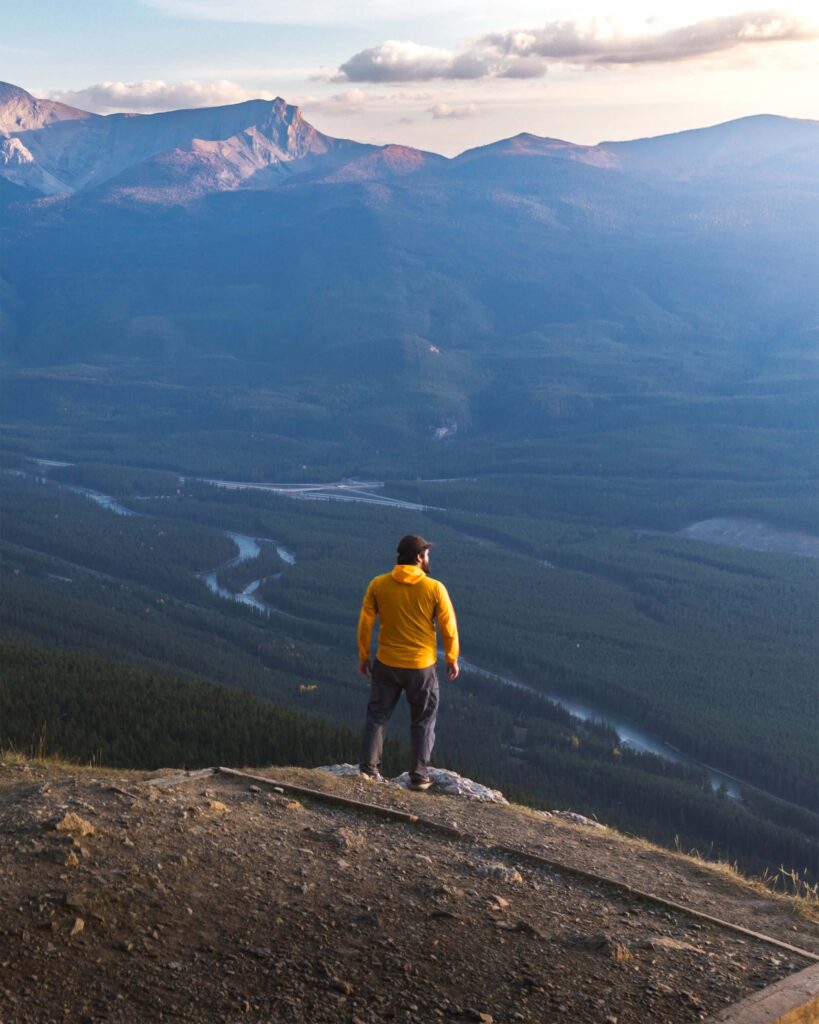
Note: The Castle Mountain Lookout hike is located in Banff National Park, meaning that a valid park pass is required. Day passes can be purchased at the park gates and are per day per person, but if you’re staying a week or longer, it’s more cost-effective to just buy an annual pass instead.
Before visiting Banff National Park it’s essential to read up on the Parks Canada rules that must be followed to avoid tickets and/or fines. When hiking it’s important to avoid harmful practices such as disturbing plants or rock-stacking, or removing any natural object from flowers to rocks, as it’s important to leave the environment as natural as possible for the animals and for fellow hikers to enjoy in perpetuity. As many flowers as there are, there are few enough that if we all took one, then there wouldn’t be any left. If you’re after a souvenir to take home with you, there are tons of gift shops in the Banff townsite to check out. Otherwise take only photos, leave only footprints.
If you haven’t heard of Leave No Trace principles, they’re also really essential to read up on before heading anywhere into the outdoors in general. Following these important principles basically means doing your best to leave beautiful places like Castle Mountain Lookout as good (if not better) than you found them, both for their preservation and for the enjoyment of other visitors.
Castle Mountain Lookout Round Trip Details
Distance: 7.8 KM / 4.8 MI
Elevation Gain: 583 M / 1912 FT
Hiking Time: 2.5 HRS
Hiking & Safety Tips
- Prepare for the possibility of wildlife encounters. Bear spray is a must whenever travelling in bear country, as well as learning how to use it. Though your chance of an aggressive bear encounter is low, it is always better to be prepared with bear spray. Bear bells are proven to be an ineffective bear deterrent, and are actively discouraged by Parks Canada. The best way to let bears know you’re around is simply to use your voice. Make sure to keep a respectful distance from wildlife and never feed the animals. It may seem kind but it doesn’t just kill wildlife and put people in danger, it’s also illegal.
- Research current trail conditions and make sure you are well-informed about the route before you leave, and assess if it is within your capability. Be aware of what time it gets dark and check the weather forecast. Make sure to tell someone where you’re going and when you expect to return. Every year as more and more people try hiking for the first time, the number of rescues goes up. Being prepared is the best defense.
- Pack everything you need for a successful hike, including enough water and energy-rich snacks. Remember to pack out everything you pack in though – don’t expect to find a convenient garbage can halfway up the trail. Bring appropriate layers (remember you’ll warm up once you start hiking) and sun protection. Hiking poles may be helpful but are not required. In addition to not leaving any garbage on the trail yourself, I highly recommend bringing a garbage bag and collecting any trash that you do see on the trail. You’re guaranteed to make the hike up Castle Mountain Lookout a more enjoyable experience for the next person.
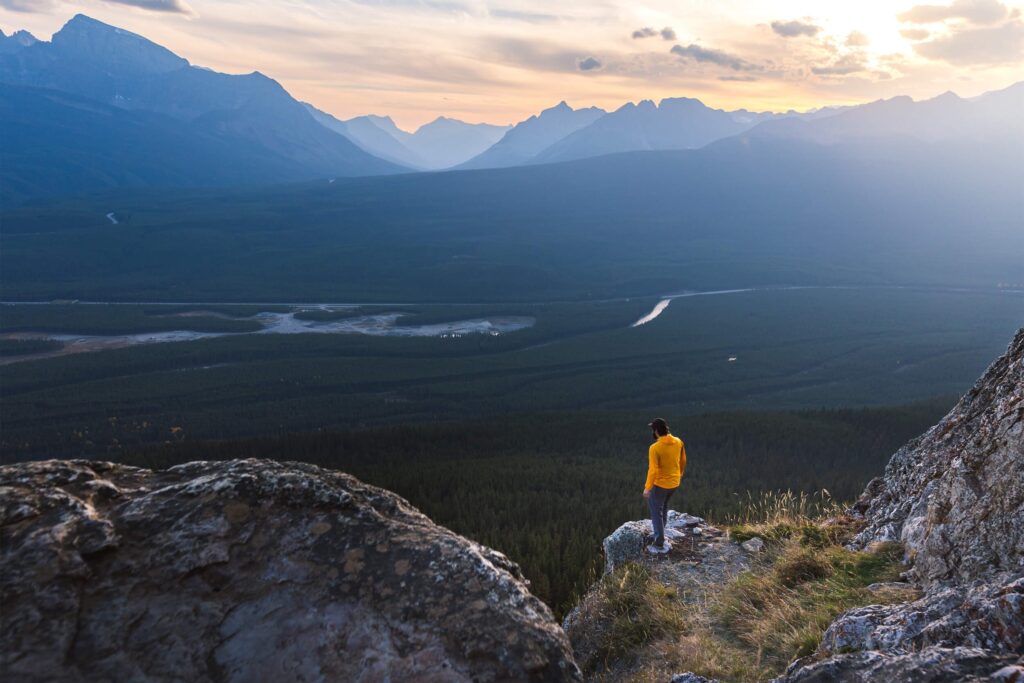
How to Get to Castle Mountain Lookout Trailhead
The parking area for the Castle Mountain Lookout Trail is approximately half an hour from either Banff or Lake Louise. From Highway 1, turn off at Castle Junction, the only real intersection between the two towns, and the same turnoff as for nearby Silverton Falls and Johnston Canyon. You’ll know your at Castle Junction when you see turnoff signs for Radium Hot Springs. If driving from Banff you’ll likely be able to identify the distinctly castle-looking Castle Mountain rising up near the turn off. Drive east from Castle Junction towards Castle Mountain. After crossing the Bow River and passing the chalets and gas station, turn left at the t-junction onto the Bow Valley Parkway. Drive up for five kilometres and turn right down the unmarked gravel turnoff into the Castle Mountain Lookout parking lot.
Click here to open the exact trailhead location in Google Maps.
Hiking Castle Mountain Lookout
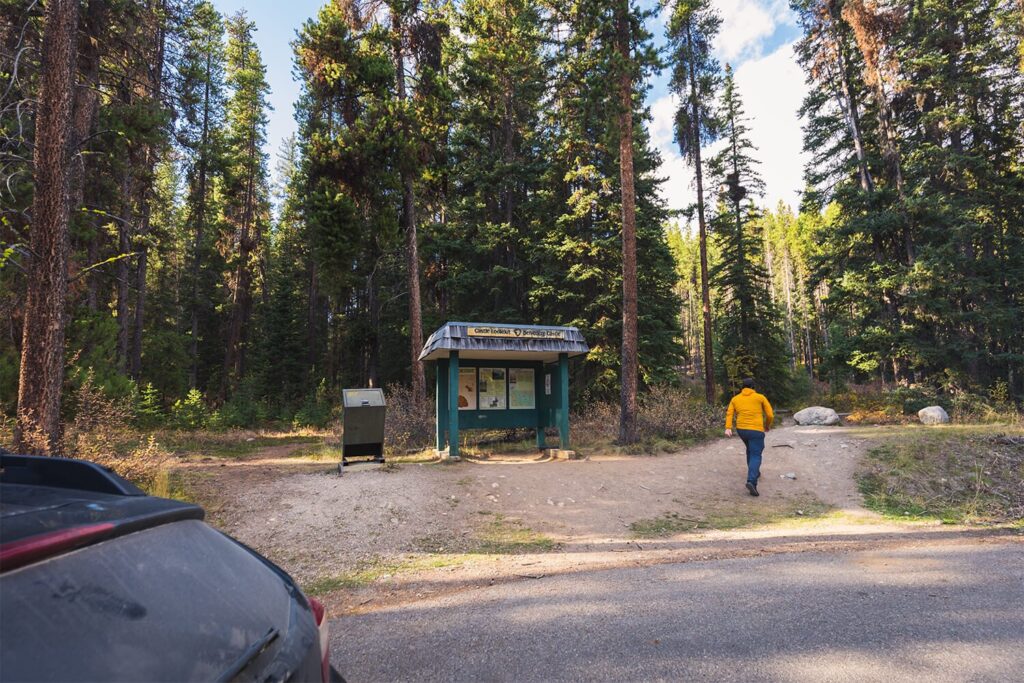
The Castle Mountain Lookout trailhead.
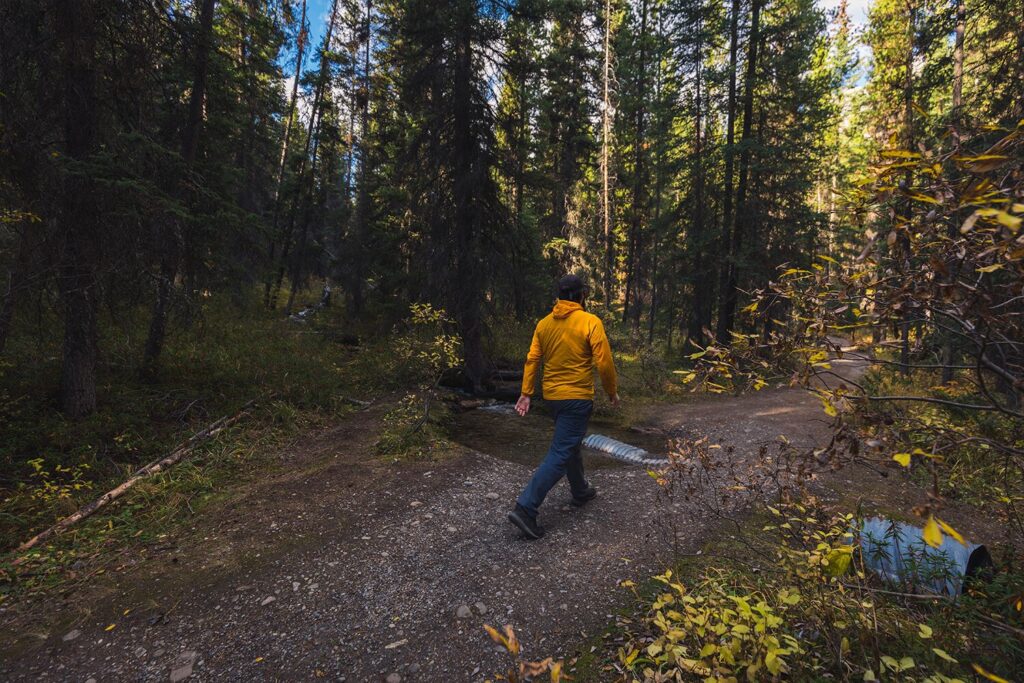
The trail is initially pretty flat as it heads straight towards the base of Castle Mountain.

There are some lovely views through the trees looking up the mountain as the trail starts to head upwards.
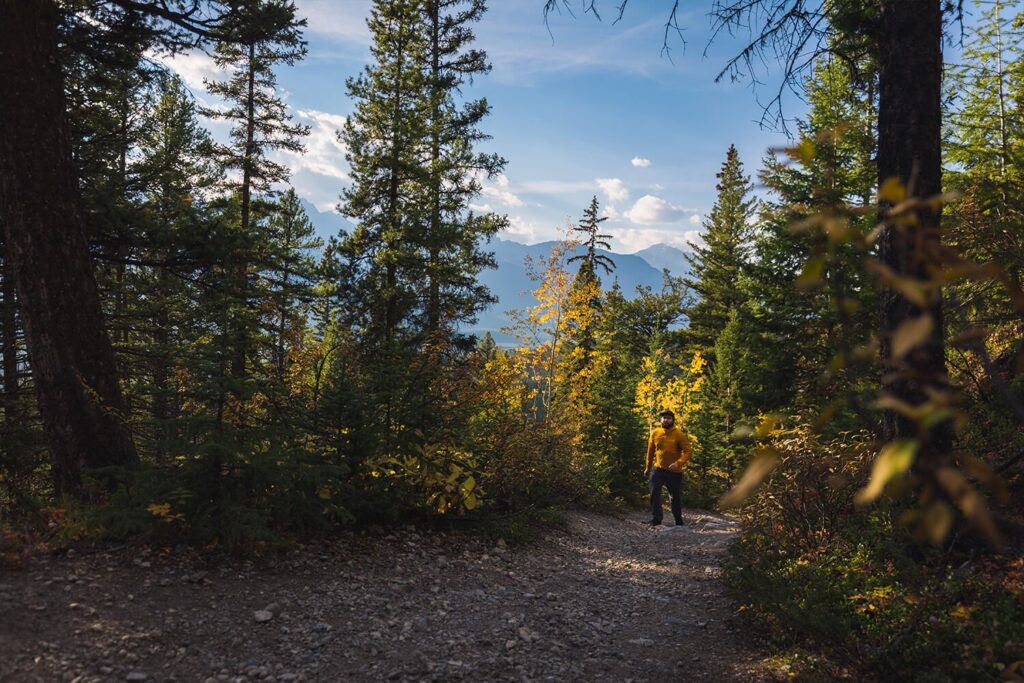
Peekaboo views back over the Bow Valley pale in comparison with the views from the top.
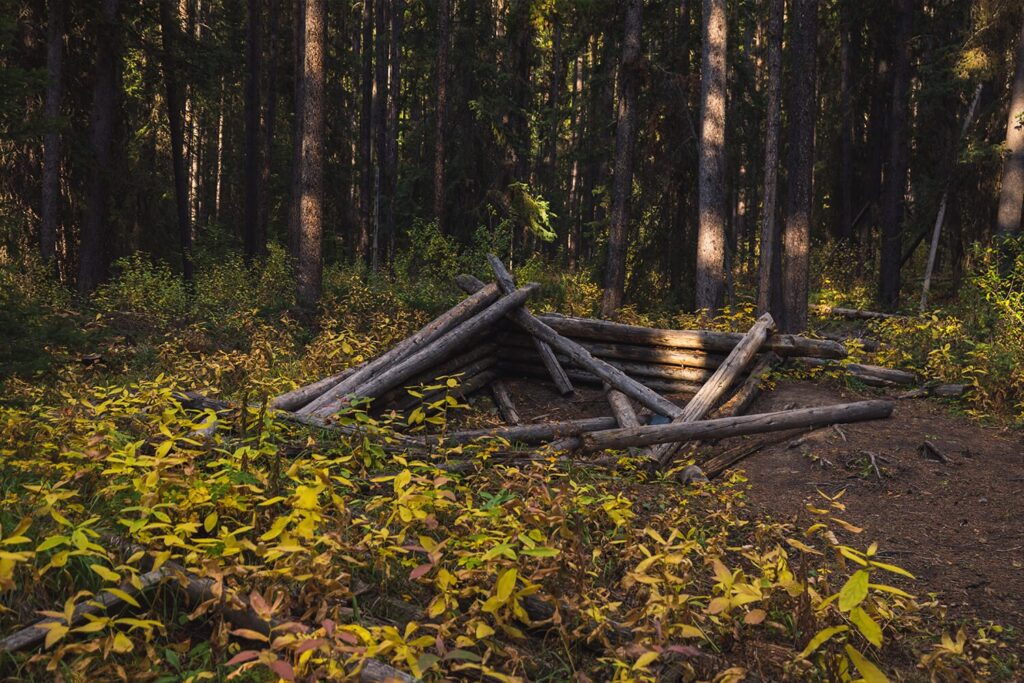
Remains of an old cabin alongside the trail.
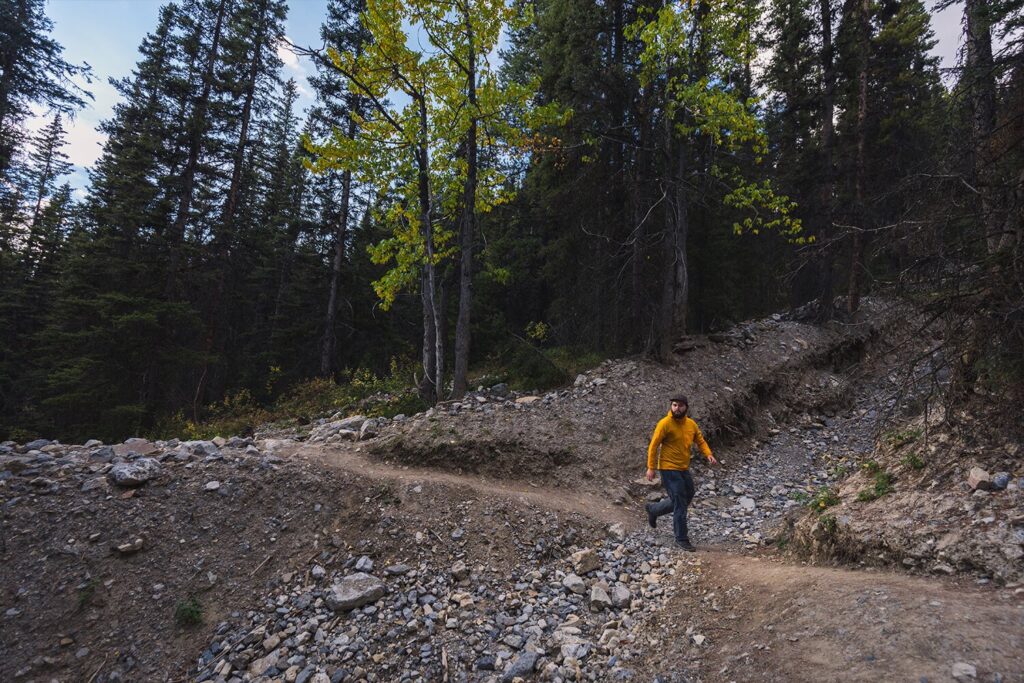
Crossing through a gully. Another hiker here told me to “Have a nice photo shoot!” Wondering if he was making fun or not kept me up that night.
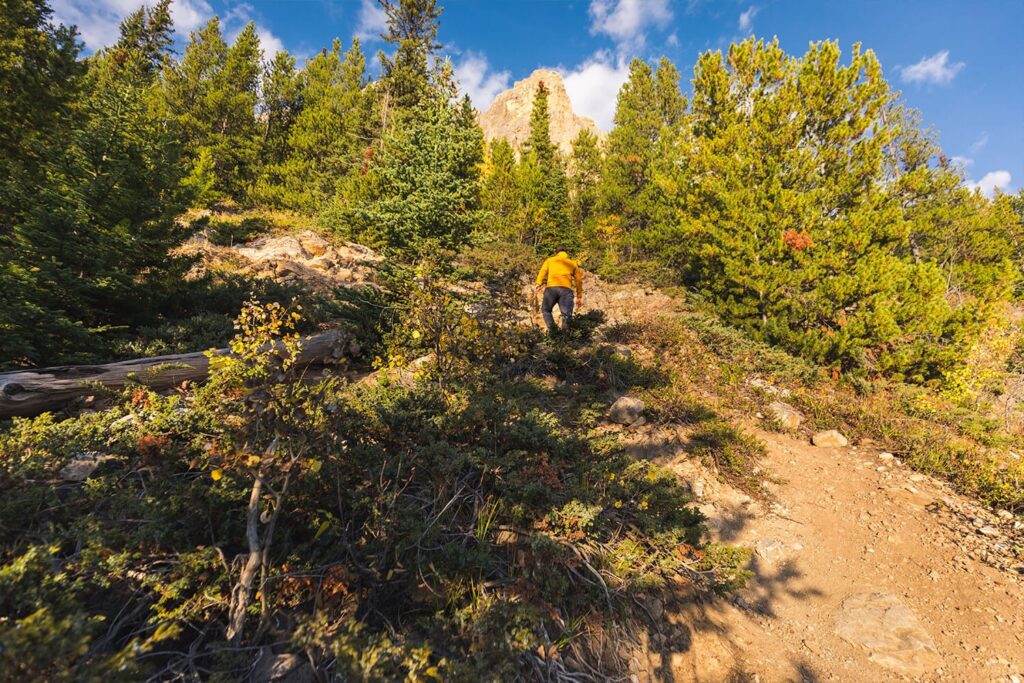
A steeper section of trail. Sadly the trail gets a little braided here too, so please try to stay on the main trail as much as you can.
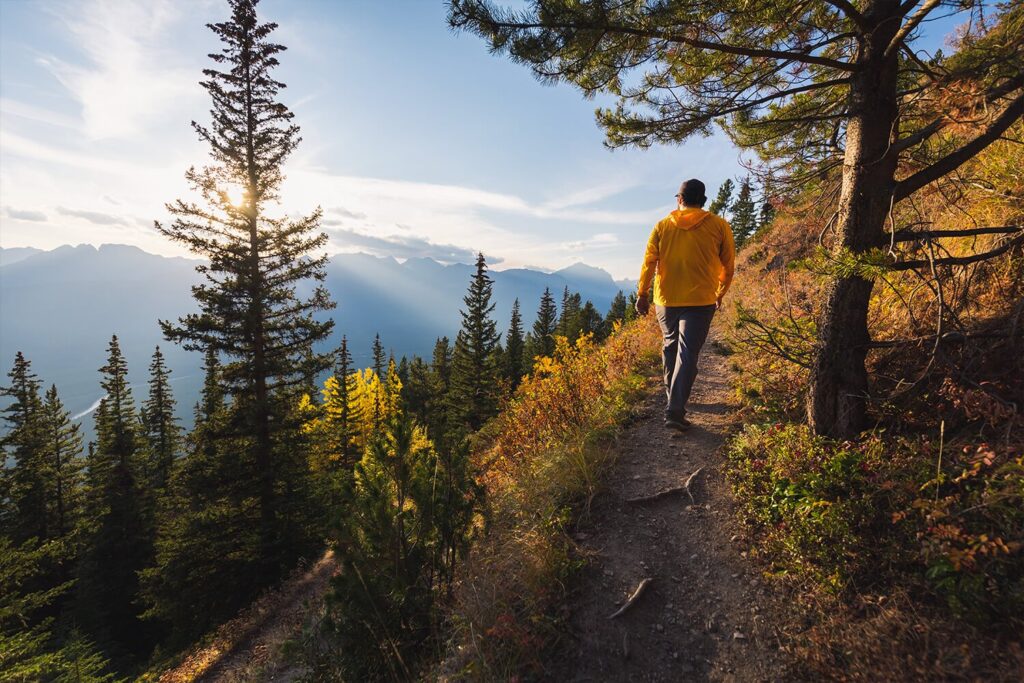
Views definitely getting better now.
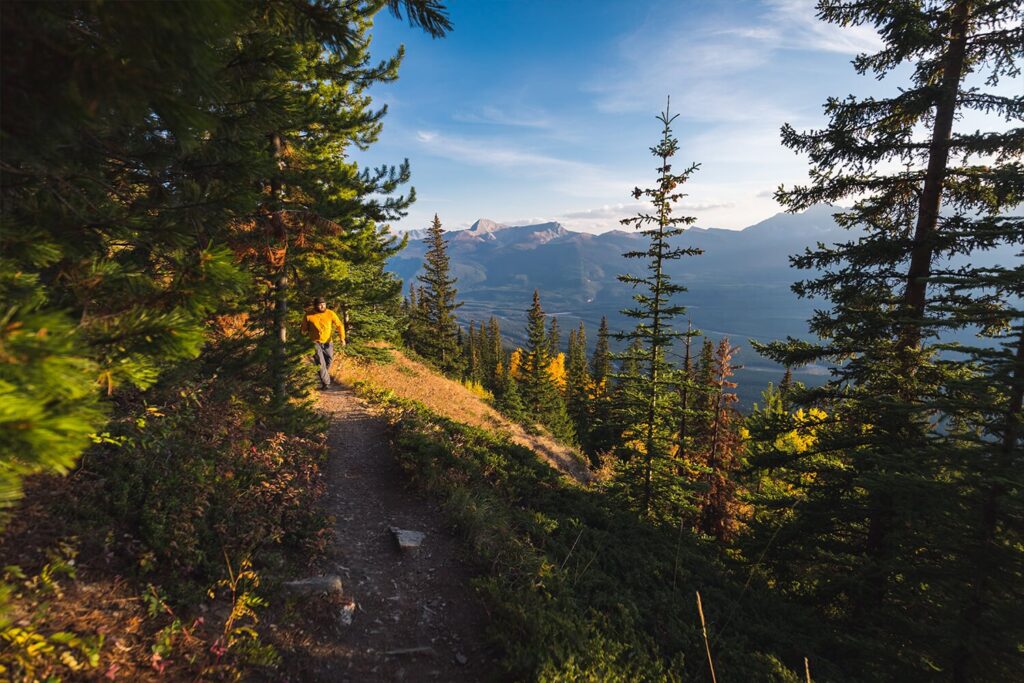
The trail switchbacks back and forth several times as it approaches the lookout, with the views getting incrementally better the higher one goes.
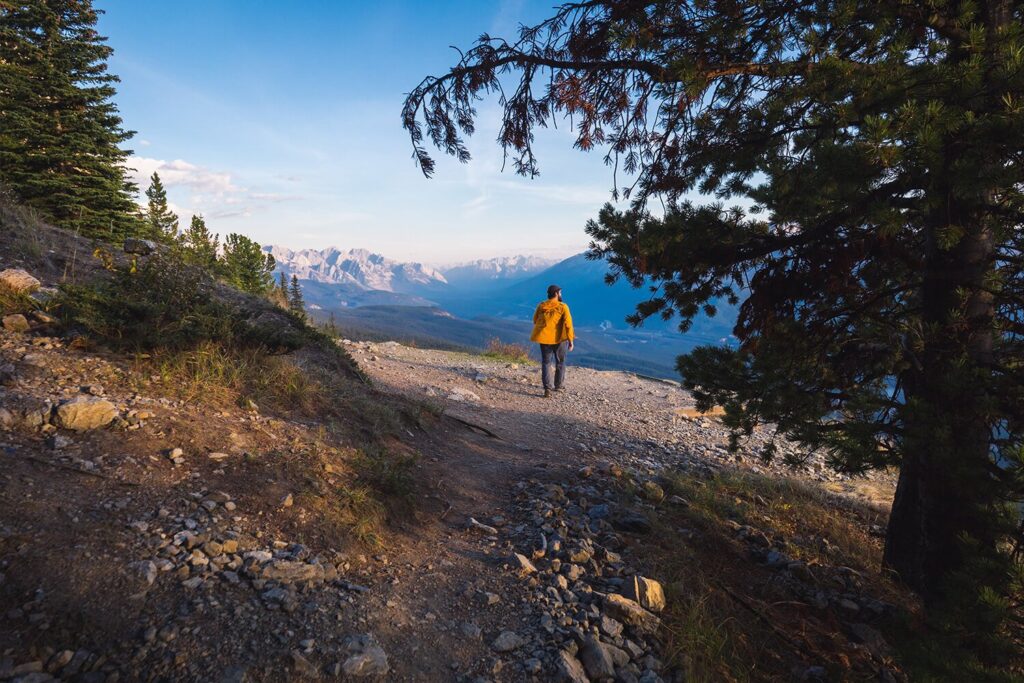
The fantastic panoramic views at the the site of the former Castle Mountain Lookout.
Recommended Hiking Gear



Water is a must whenever I’m hiking, especially if the sun is going to be out. My favourite water filter I’ve used is the Katadyn BeFree 0.6L, which unlike other water filters I’ve used packs up really small and lightweight. For hikes where I know there won’t be any readily available water sources along the way, I make sure to bring my own. The Hydrapak Stow 1L bottle is my go-to, for the same reason that it’s made of a soft plastic that folds up and doesn’t take up any more extra space than necessary in my pack. Finally, Aquatabs are another great option for purifying water, with one tablet being suitable for one litre of water. I previously used the Grayl water filter while travelling internationally, and though I found its hard body more convenient for day to day use and easier to drink from, it has a little too much bulk for my fast-and-light style of hiking.



The secret to all my photos of gorgeous sunset and sunrise mountaintop views? A lot of hiking in the dark. And let me speak from personal experience when I say that the last thing that you want to happen when hiking is to be caught in the dark without a headlamp. I used the Black Diamond Spot 400 for years and it worked great – until I lost it on top of a mountain somewhere. The only downside to it was having to worry about the batteries dying, though there’s also a slightly more expensive version that has a rechargeable battery. Nowadays I’m using the Petzl Actik Core, which is a bit pricier than the more budget-friendly Black Diamond, but is also brighter, more comfortable (in my opinion), and has a hybrid power system that is rechargeable but can also take AAA batteries if needed.
You won’t see me using trekking poles on shorter hikes often – but on long hikes and backpacking trips, as well as certain scrambles, they are an absolute lifesaver. I’ve invested in a high quality ultra-lightweight pair of MSR DynaLock Ascent carbon poles which, while pricey, I don’t regret one bit. If you’re not entirely sure how much use you’re going to get out of a pair of trekking poles, the best budget-friendly option would be the Trekology Trek Z 2.0. Amazon does sell a lot of cheaper Made in China-style trekking poles for cheaper, but these usually are much much heavier and not worth buying.
All the best and most long-lasting cables and power banks I’ve ever owned have been Anker. I once had a phone cable from them that lasted me over three years of daily use! That’s why I keep an Anker PowerCore Essential 20K power bank on me. Like many people I use my phone for a lot of stuff when hiking (checking in with family, using online maps, taking photos, flying my drone) so I like to be prepared for that low battery warning by having a backup power source on me just in case.



The only socks I ever buy for myself are from Darn Tough, and I almost always make sure to wear them when hiking. After years of having no problems only wearing these comfortable and rugged socks for hikes, I accidentally wore a pair of no-name socks on a hike last year and ended up with blisters on both feet. Safe to say I’m back to sticking with the Darn Tough. And the best part? They have a lifetime guarantee, meaning that if they ever wear out you can send them back for a brand new pair. For hiking footwear I go between a pair of lightweight approach shoes for quick and dirty mountain ascents or anything involving scrambling and more heavy-duty boots for longer treks. I’ve worn a couple different versions of the lightweight but super durable Arc’teryx Konseal FL 2 approach shoes for a few years now and am very impressed with the durability. I also really like the thick toecap that keeps me protected every time I stumble into a root or large rock. For longer, tougher, or muddier treks I rely on my LOWA Camino EVO GTX, which I find insanely comfortable and made of very high quality.



I wear my Ar’teryx Gamma Lightweight Pants on every single hike I go on, and on many days when I’m not hiking. After several years of abuse they are still holding together extraordinarily well, with only a few small holes from where I’ve fallen down and some slight stains from being repeatedly coated with mud. They’re lightweight, breathable, and super comfortable. For lightweight and breathable hiking tops I’m a big fan of both the Patagonia Capilene Shirt and the MEC Core Shirt. My Arc’teryx Squamish Hoody shows up in a lot of my photos. It’s super lightweight and packable, and does a great job of cutting the wind while also being pretty breathable. I also have an Arc’teryx Atom Hoody and Arc’teryx Beta LT that I pull out for cooler or wetter conditions.
I hope you enjoyed this guide to hiking Castle Mountain Lookout in Banff National Park! Feel free to leave any questions in the comment section below or to contact me directly via social media.
